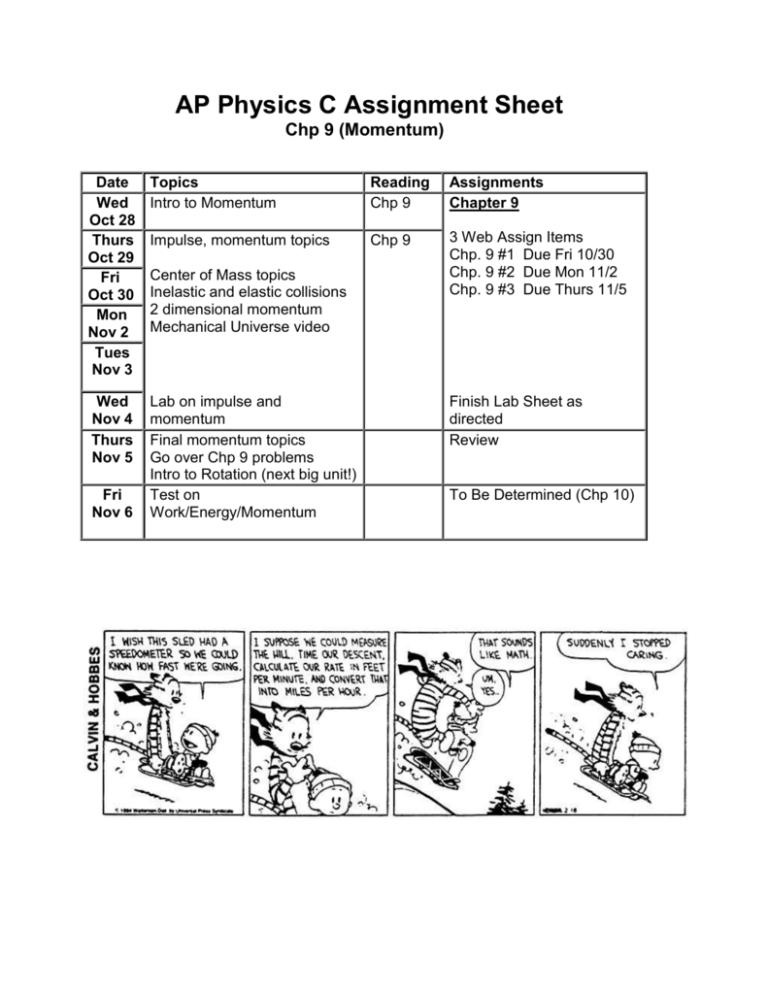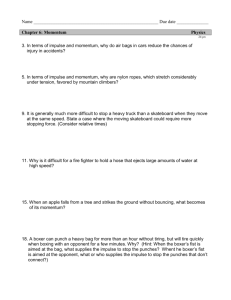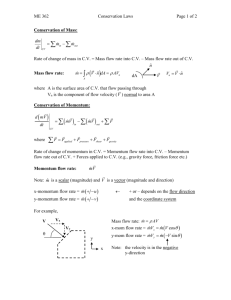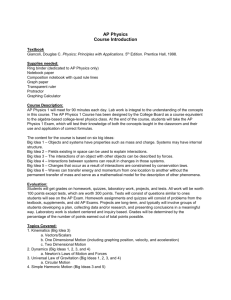Physics 2 Assignments
advertisement

AP Physics C Assignment Sheet Chp 9 (Momentum) Date Wed Oct 28 Thurs Oct 29 Fri Oct 30 Mon Nov 2 Tues Nov 3 Topics Intro to Momentum Reading Chp 9 Assignments Chapter 9 Impulse, momentum topics Chp 9 3 Web Assign Items Chp. 9 #1 Due Fri 10/30 Chp. 9 #2 Due Mon 11/2 Chp. 9 #3 Due Thurs 11/5 Wed Nov 4 Thurs Nov 5 Lab on impulse and momentum Final momentum topics Go over Chp 9 problems Intro to Rotation (next big unit!) Test on Work/Energy/Momentum Fri Nov 6 Center of Mass topics Inelastic and elastic collisions 2 dimensional momentum Mechanical Universe video Finish Lab Sheet as directed Review To Be Determined (Chp 10) AP Physics C objectives Unit 5 - Impulse & Momentum Text: Fundamentals of Physics by Halliday, Resnick, & Walker Chap 9 II. Impulse and Momentum: Students should understand impulse and linear momentum so they can: a. Relate mass, velocity, and linear momentum for a moving body, and calculate the total linear momentum for a system of bodies. b. Relate impulse to the change in linear momentum and the average force acting on a body. c. State and apply the relations between linear momentum and center-of-mass motion for a system of particles. d. Define impulse, and prove and apply the relation between impulse and momentum. III. Conservation of Linear Momentum, Collisions a. Students should understand linear momentum conservation so they can: (1) Explain how linear momentum conservation follows as a consequence of Newton’s Third Law for an isolated system. (2) Identify situations in which linear momentum, or a component of the linear momentum vector, is conserved. (3) Apply linear momentum conservation to determine the final velocity when two bodies that are moving along the same line, or a right angles, collide and stick together, and calculate how much kinetic energy is lost in such a situation. (4) Analyze collisions of particles in one or two dimensions to determine unknown masses or velocities, and calculate how much kinetic energy is lost in a collision. (5) Analyze situations in which two bodies are pushed apart by a spring or other agency, and calculate how much energy is released in such a process. b. Students should understand frames of reference so they can: (1) Analyze the uniform motion of a particle relative to a moving medium such as a flowing stream. (2) Transform the description of a collision or decay process to or from a frame of reference in which the center of mass of the system is at rest. (3) Analyze the motion of particles relative to a frame of reference that is accelerating horizontally or vertically at a uniform rate.








